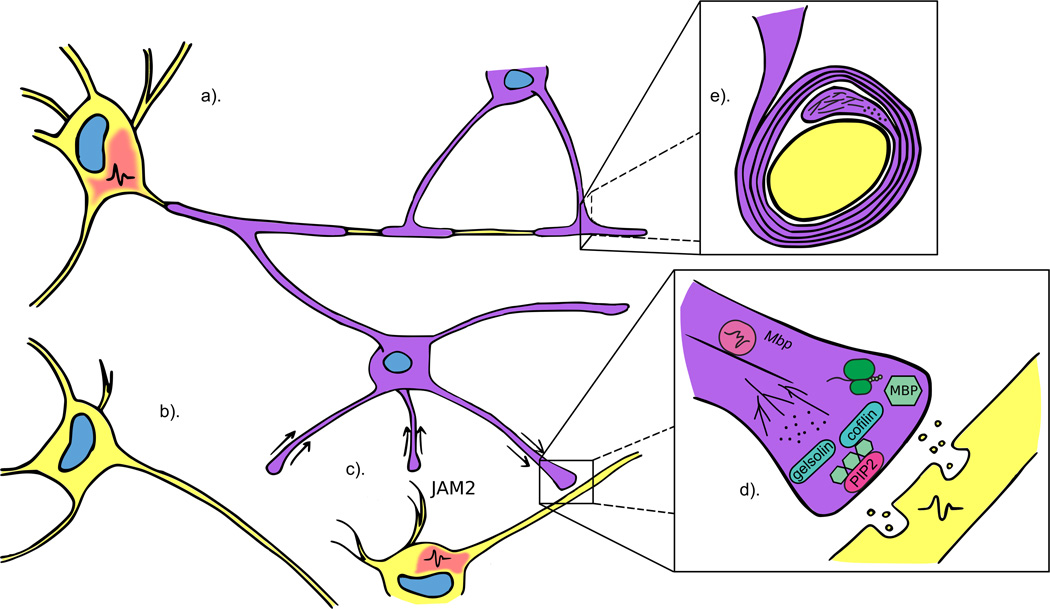Figure 2.
Multiple factors fine tune the myelination potential of oligodendrocytes. Oligodendrocytes preferentially myelinate electrically active axons (a) and retract processes from inactive axons (b). Furthermore, the intrinsic myelination program is moderated by negative regulators, such as JAM2, which are expressed on dendrites (c). Vesicular release from active axons initiates a cascade of events, one of which is the translation of locally transported Mbp mRNA. MBP then competes with the factors gelsolin and cofilin for binding to PIP2 on the inner oligodendrocyte membrane, resulting in release of the two proteins and subsequent actin disassembly (d). During wrapping, filamentous actin is located at the leading edge of the inner tongue and is proposed to propel the membrane forward by actin disassembly (e) (image adapted from Nawaz et al. 2015).

